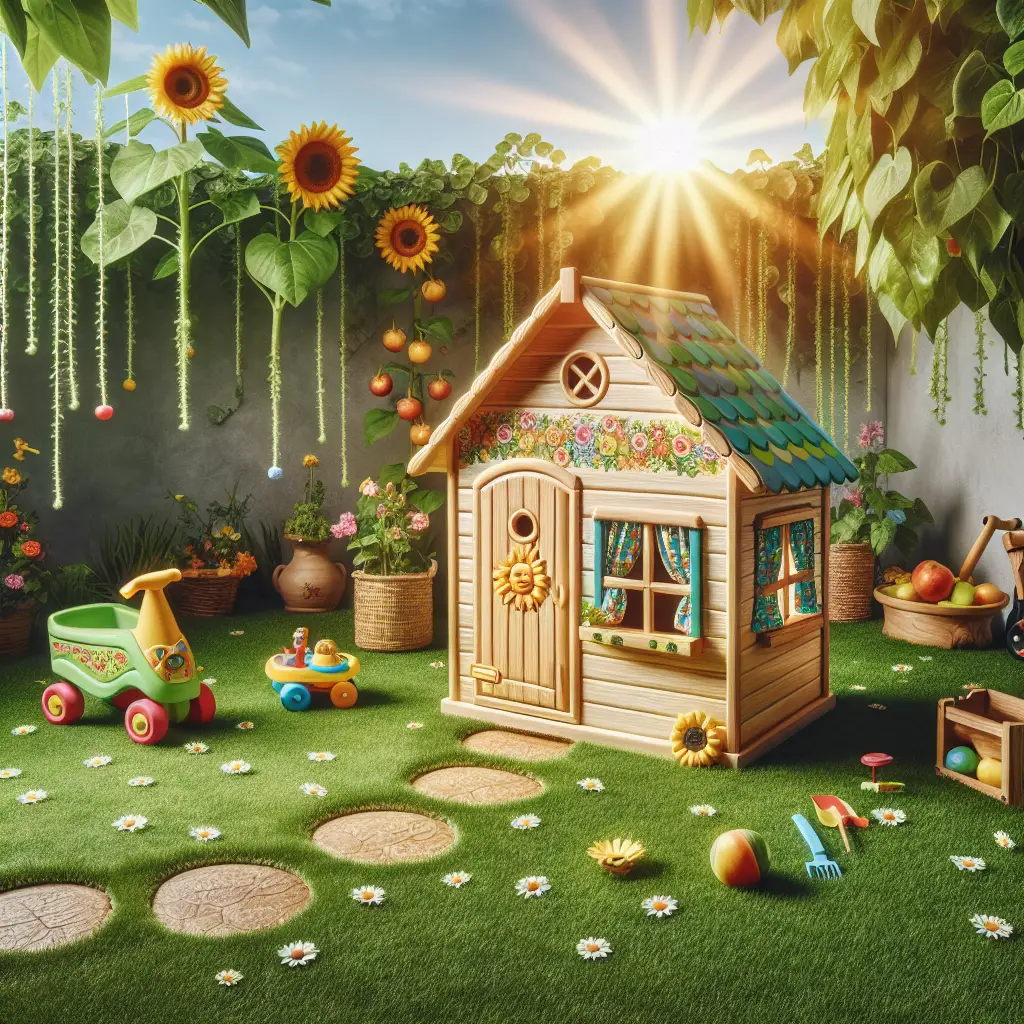Can You Put a Playhouse on Grass? Your Guide to Safely Installing a Children’s Oasis
Children’s laughter and excited squeals ring through the backyard – the unmistakable soundtrack of joy that fills the air when a playhouse becomes a central feature of your outdoor space. But for parents and guardians, the question of whether a playhouse can safely be placed on grass is a practical concern that deserves attention before buying and setting up this child’s haven.
Understanding the Grass Surface for Playhouse Installation
The idea of setting a playhouse directly on grass seems simple and organic. After all, what could be more natural than a wooden structure atop a lush green lawn, blending into the tapestry of backyard fun? However, durability, safety, and maintenance issues arise from using grass as your foundation.
Firstly, grass is a living organism that requires sunlight, water, and air circulation to thrive. Placing a playhouse on it could lead to discoloration, poor growth, or death of the grass underneath due to blocked sunlight and compacted soil.
Secondly, a grass surface can be uneven, which might cause instability in the playhouse structure. Over time, this could make the playhouse lean or wobble, increasing the risk of accidents.
Moreover, during rainy seasons or in damp climates, grass surfaces become muddy, leading to increased wear on the playhouse and messy play conditions.
Preparing the Ground for Your Playhouse
To ensure stability and extend the life of your wooden playhouse, preparing the ground before installation is crucial. Consider a level and well-draining area of your yard to prevent water from pooling around the playhouse, which could rot wood and attract pests. Leveling can be accomplished with the use of a shovel and a spirit level, or for larger jobs, with a rented lawn roller.
One alternative to a grassy base is the use of solid flat pavers or a gravel bed. This provides a stable platform, prevents weed growth, and facilitates drainage, resulting in a secure and lasting installation. HGTV offers excellent guides for beginners on setting up a gravel base in your backyard.
Building a Base for Your Playhouse
An option many homeowners select is to build a wooden base or platform for their playhouse. Ideally, treated lumber should be used to prevent decay and termite damage. A wooden base lifts the playhouse off the grass, protects the structure from moisture, and prevents the bottom from rotting.
To construct a wooden base, you’ll need to measure your playhouse dimensions accurately and create a frame slightly larger than these dimensions. Ensure the frame is square and level it by placing concrete blocks or bricks underneath at strategic points. Here’s where a resource like This Old House comes in handy with their expert guidance on building outdoor structures.
Considering Safety and Regulations
While considering a playhouse placement, don’t forget the safety of the children who will be using it. The Consumer Product Safety Commission provides guidelines for safe play structures, emphasizing the importance of soft landing surfaces in play areas. Grass, unless very lush and well-maintained, typically does not provide adequate cushioning for falls, which means you might consider adding a safety material like rubber mulch or wood chips around the playhouse.
Furthermore, check local building codes and homeowners’ association regulations to ensure compliance. Some areas or communities have specific rules regarding outdoor structures, including size, location, and installation methods.
Opting for a Prefabricated Playhouse Base
For those less inclined toward a DIY project, purchasing a prefabricated playhouse base is a viable choice. These bases, designed specifically for outdoor playhouses, ensure proper support and drainage, simplifying the installation process. Retailers such as Home Depot stock a variety of bases suitable for different playhouse models.
Regular Maintenance for Longevity
Once installed on an appropriate base, your playhouse will require regular maintenance. Wooden playhouses in particular need to be treated or painted periodically to protect them from the elements. Check annually for signs of rot, wear, or structural damage, especially if the playhouse is used frequently.
Selecting the Right Playhouse
When selecting a playhouse, consider materials suitable for your climate and the age of the users. Sturdy wooden playhouses like those from Wayfair often provide long-lasting enjoyment and can become heirlooms passed down to younger family members. Ensure that the scale of the playhouse fits your backyard space and that its design allows for adequate airflow and light penetration to keep the interior dry and pleasant.
In conclusion, while setting a playhouse directly on grass is possible, it’s not the best long-term solution for stability, maintenance, or playhouse longevity. By creating a level, durable base, you’re investing in a safer and more enjoyable play experience for your children. Regular upkeep and adherence to safety guidelines turn a simple playhouse into a secure retreat that can foster countless hours of imaginative play. So, while the grass may call to you with its siren song of simplicity, remember that a little planning and preparation will result in a happier outcome for all. Happy building, and even happier playing!

